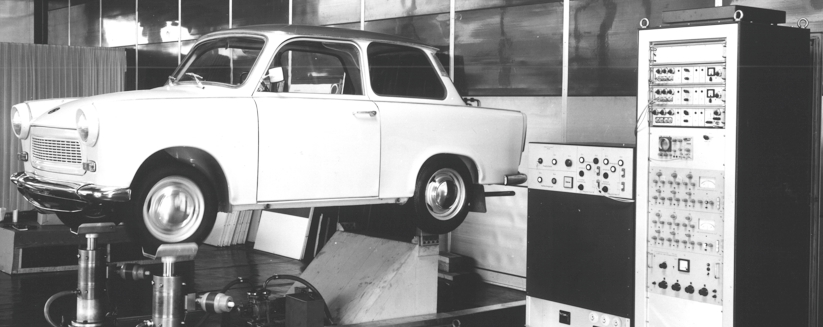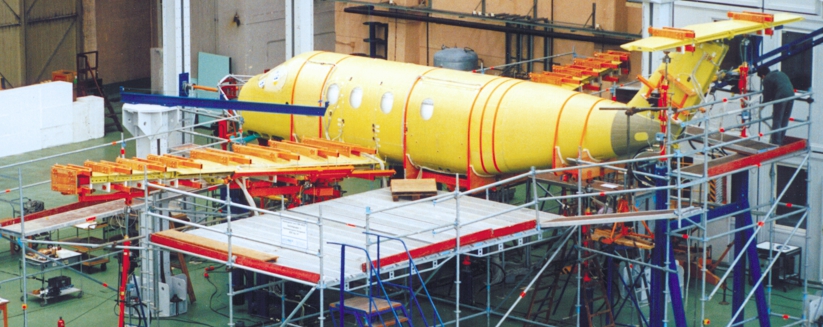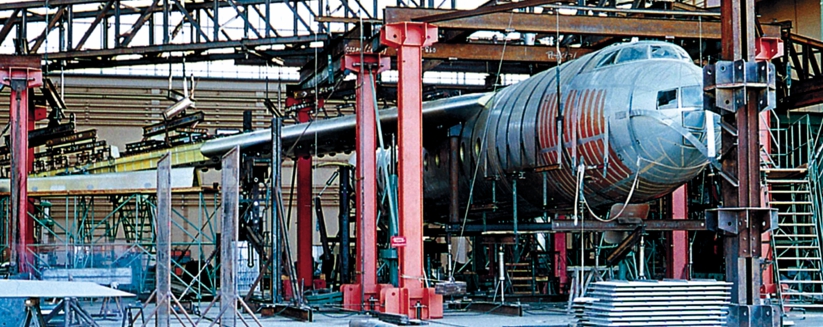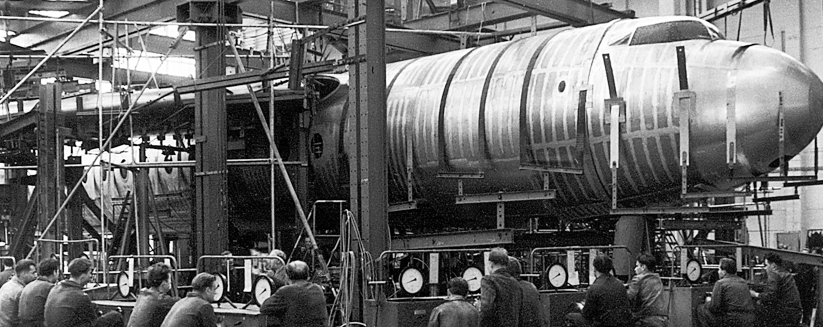Company history
„It is not a question of predicting the future, rather being prepared for it.”
Pericles
The roots of IMA Dresden reach right back to 1955, when aircraft construction began in Dresden. The predecessor company of IMA Dresden was founded from these roots back in 1961: the founding mission of the IfL Institut für Leichtbau (institute for lightweight construction) was the economical use of materials, in this case utilising the smallest possible quantity of the technically-required, most suitable material. This was in many ways the moment of birth for testing halls, test devices, methods and technical knowledge, everything that has been developed and built up since then – and what is IMA Dresden today.
Aircraft construction in Dresden – where it all began
1955 – 1961
The founding of the VEB Flugzeugwerke Dresden in 1955 was the starting signal for aircraft construction in Saxony. With Brunolf Baade as chief designer, who had previously worked for Fokker, Goodyear and Junkers, the first German passenger aeroplane was developed in Dresden – the “152” or “Baade 152”. The testing halls built specifically for it are still a part of the IMA plant premises today. As of 1958, the 152 passenger jet was statically tested for fatigue there and, from 1960, also in a water tank.
Economic considerations and the ever-growing technical advantages of foreign aircraft manufacturers led to the state owned company surprisingly terminating civil aircraft construction in March 1961.
The Institute for Lightweight Construction and Economical Utilisation of Materials (IFL) – the cradle of lightweight construction
1961 – 1990
Based on an initiative from Brunolf Baade, the Institute for Lightweight Construction and Economical Utilisation of Materials (IFL) was founded in Dresden on the 1st of July 1961 with the operating section in Pirna (Sonnenstein).
The founding mission of the “IfL” Institut für Leichtbau (institute for lightweight construction) in 1961 was the economical utilisation of materials, in this case utilising the smallest possible quantity of the technically most suitable material. With this motivation, an intense cooperation between the IfL and numerous industry sectors was quickly developed, whose products became more efficient due to the lightweight construction. The tasks of the 700 employees under the stewardship of Brunolf Baade comprised the selection of materials and the development of new lightweight construction technologies, consultation in questions of construction, theoretical and experimental inspections of static strength and operational stability as well as physical inspections.
Many TGL standards for lightweight construction, strength calculations and materials were created from these fields of research. The technical standards, quality regulations and delivery conditions (TGL) were the equivalent to the West German DIN standards until 1990. With the reunification of Germany, the TGLs were superseded by DIN and the IfL became the successor company IMA Dresden.

IMA Dresden – from particle to complete vehicle, the world on the test stand
Since 1993
The years 1990 to 1993 were strongly influenced by the social and economic upheaval caused by German reunification. The interim period between IfL and IMA resulted in additional company names and legal forms:
- Zentralinstitut für ökonomischen Metalleinsatz
- IMA Institut für Materialforschung und Anwendungstechnik GmbH
Back in the Autumn of 1992, the four executive officers Prof. Dr. rer. nat. Christian Wegerdt, Dr.Ing. Wilhelm Hanel, Dr.-Ing. Henrik Höninger and Dr.-Ing. Helmut Rösner, agreed to continue the existence of the tradition-rich operation under their own management. After impressing the employees of the trustees in Dresden that the company had opportunities, and gaining their active support for the proposed path, the route to privatisation was paved. The necessary, drastic staff reduction could be mainly be implemented by utilising the possibilities created by age transition.
IMA Materialforschung und Anwendungstechnik GmbH (IMA GmbH Dresden) was founded via a management buy out on the 1st of May 1993. 96 employees were employed at this time. The entry in the commercial register was executed with registration number HRB 5995 on the 30th August 1993.




